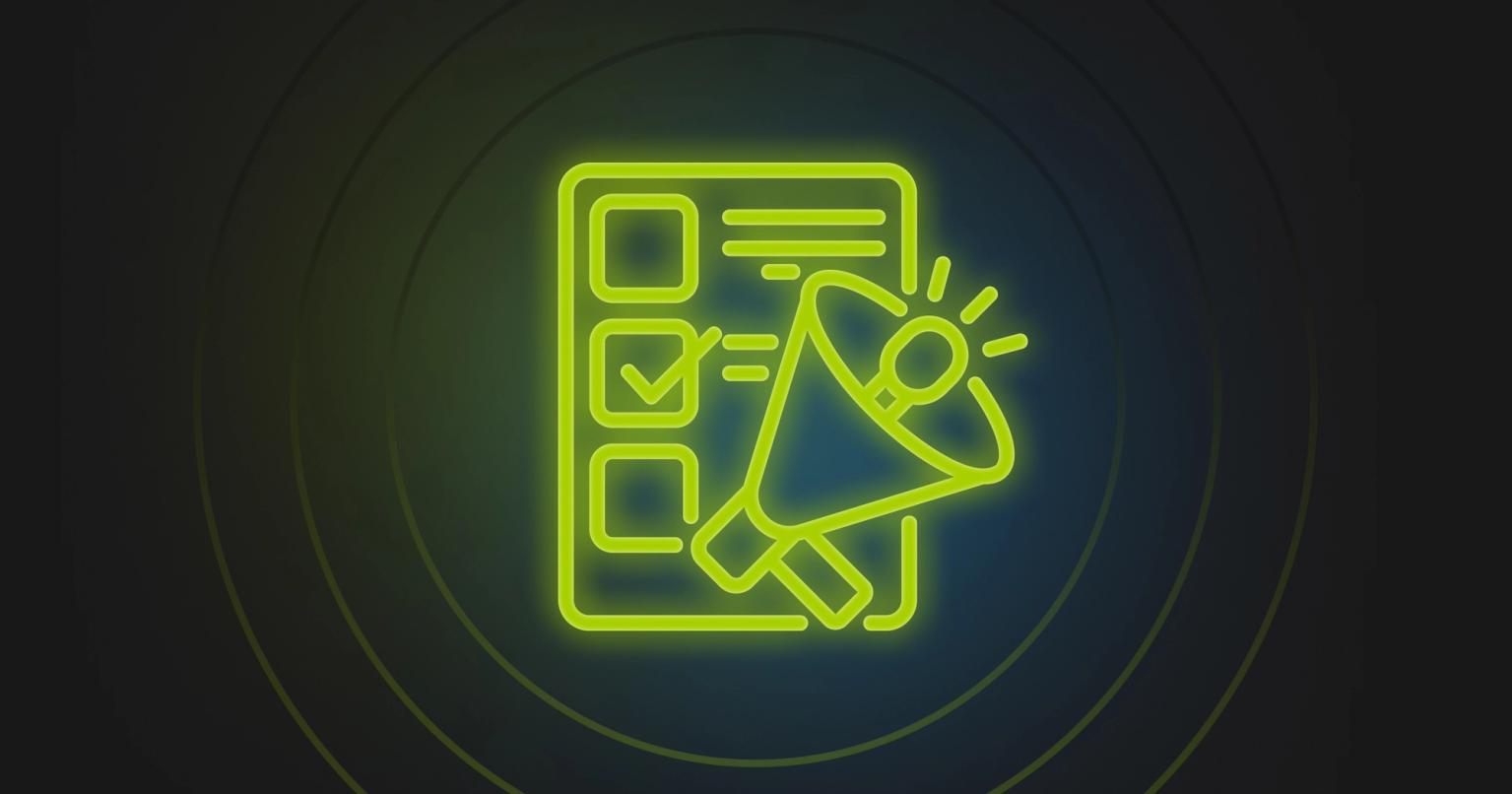The History of Email Marketing
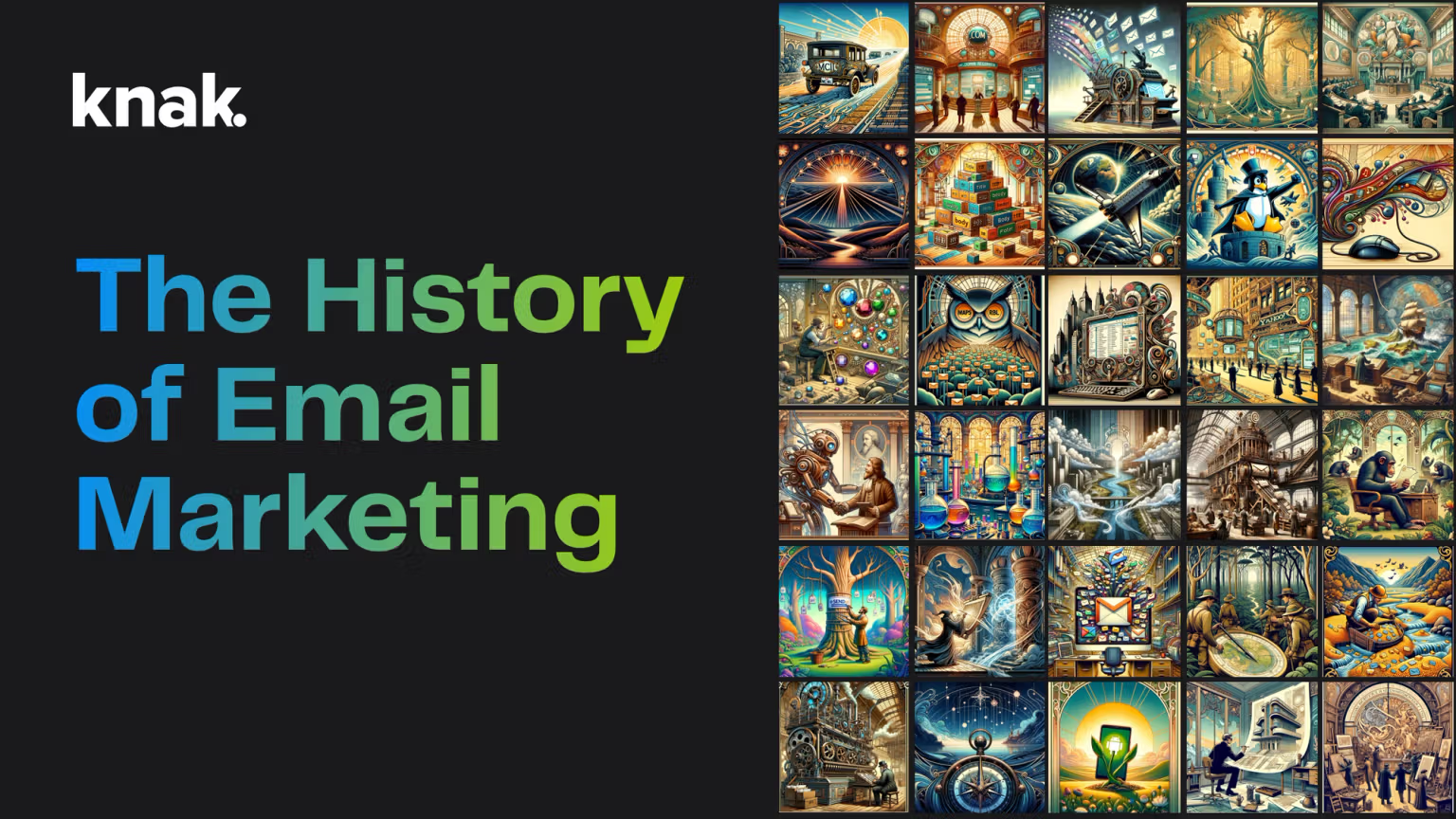
This is the most complete email marketing history you’ll find on the internet. I’ve included more than 80 events spanning from the dawn of email communications in the 1970s right through to modern times. I’ve used DALL-E 3 to generate images for each event to enrich your experience and to give some allegorical visuals that I thought nicely represented each event. These images aren’t meant to be accurate representations – so take them with a grain of salt.
I’m going to lead here with my 3 big takeaways:
- The history of email marketing is intricately tied with the history of spam and the fight to protect consumers from unwanted and even dangerous emails.
- The technical innovations that make email a ubiquitous part of our modern communications are as interesting and important as any other event, but often not given their due. I give them their due here.
- From its very inception, email has proven to be a powerful communication tool connecting humans across the globe. The response of governments, corporations, and consumers to this channel attest to its significance.
I hope you enjoy learning about the rich legacy of email marketing. In my research, I was continually astounded by the significance of events and the responses to the evolution of this technology. Make no mistake: Email is now a fundamental part of the human experience – so let’s celebrate its history and look towards its future!
1970s Email Marketing History
It’s hard now for us to imagine a world before email. The unrivaled convenience of sending an email from anywhere in the world to anyone in the world has had a massive impact on our culture. The 1970s saw key developments in email technology and include milestones like the first email sent and the birth of email spam.
1971 - First Email Sent

Ray Tomlinson sends the first email. This marks the beginning of email as a communication tool. It’s hard to imagine marketing without email, and it all traces back to this seminal event. He sent the email on the ARPANET system, the precursor to the internet.
Ray’s contributions to the internet and computer programming helped shape the foundation of digital communication.
1971 - '@' Symbol Usage

Ray Tomlinson is credited with introducing the ‘@’ symbol in email addresses. It was used to separate the user name from the name of the machine used to send the email. This is important because prior to this, messages could only be sent and received on the same computer.
The @ sign has become a ubiquitous symbol of digital communication – denoting email addresses, social media handles, and even used in collaboration tools like Google Docs.
1976 - Queen Elizabeth II's First Email

Did you know that Queen Elizabeth II was the first head of state to send an email? She sent the email from a telecommunications research center using ARPANET. Her user name was “HME2” for “Her Majesty, Elizabeth II.” Queen Elizabeth II was regularly ahead of the curve embracing new technologies in her historic reign as Queen.
1977 - Development of Email Standards

We may not appreciate how much impact the standardization of email protocols had on this communication medium. Work on email standards in 1977 with the development of RFC 733 and subsequent updates ensured compatibility and interoperability across different email systems. In short, these standards help orchestrate communications no matter what email instrument you play.
1978 - First Mass Marketing Email

Gary Thuerk gets the dubious distinction of the “Father of Spam” for sending the first mass marketing email. It reached 400 users via ARPANET and he claims it resulted in $13 million in sales. Who is going to argue with those results? Email continues to drive ROI, and, admittedly, complaints of spam.
Funny enough, Gary Thuerk embraces his place in email marketing history claiming the URL “fatherespam” on his LinkedIn profile.
1980s Email Marketing History
The 1980s were a formative period in the development of the internet, digital technology and email communications. During this period many of the foundational technical developments took place that are almost taken for granted such as the Domain Name System (DNS). While the 1970s saw the first case of email spam, the 1980s introduced the world to computer viruses spread through email.
1980 - SMTP Development Begins

The development of Simple Mail Transfer Protocol (SMTP) laid the foundation for a single, unified standard for sending and receiving emails. This key link in the chain of email development ensured that email communication could scale and be accessible to all users across all networks. Without SMTP, it’s hard to see how email would evolve from a simple messaging tool to the powerful marketing channel it is today.
1981 - IBM Introduces the PC

IBM introduced its first personal computer, the IBM 5150 in 1981. This key milestone in the history of computing had big implications as it marked the beginning of general accessibility to computers. Without IBM’s innovations in the 1960s, 70s, and 80s, it’s hard to imagine personal computing and the internet.
1982 - Creation of 'Emoticons'

The word ‘Emoticon’ comes from the combination of “emotion” and “icon.” Emoticons or ‘emojis’ are now part of the digital lexicon and widely used in email marketing to grab attention.
Dr Scott Fahlman is credited with the first substantiated usage of emoticons in 1982 when he suggested using :-) to indicate humorous posts and :-( to indicate serious posts on a message board.
1983 - Domain Name System (DNS) Introduced

The Domain Name System (DNS) was invented by Paul Mockapetris, and changed how users would navigate the internet. Imagine trying to memorize IP addresses for each website you wanted to visit? Combined with the convention of the “@” sign, it gives a reliable system for contacting users belonging to a website or organization.
1983 - Apple Introduces its Graphical User Interface (GUI)

Apple introduced its Lisa personal computer in 1983 and, with it, a graphical user-interface. This was one of the first GUI’s for personal computers and set a trend that greatly expanded the accessibility of computing in daily life. Even our watches have GUI’s now, but this innovation truly set the tone for personal computing. It’s hard to imagine sending and receiving an email without a GUI!
1983 - Introduction of MCI Mail
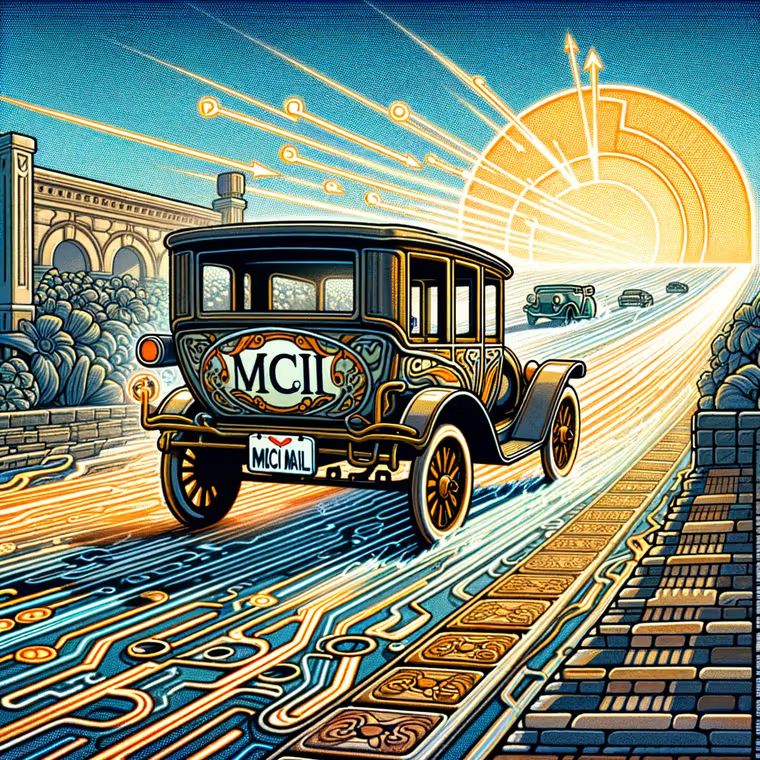
MCI Communications Corporation introduced one of the first commercial email services, and has the distinction of being one of the first email services to connect to the internet in 1989. The early service allows users to send messages to other MCI users, but was later expanded to allow users to send emails outside the MCI network. This event helped pave the way for commercial email services and email marketing as a whole.
1985 - The First .com Domain
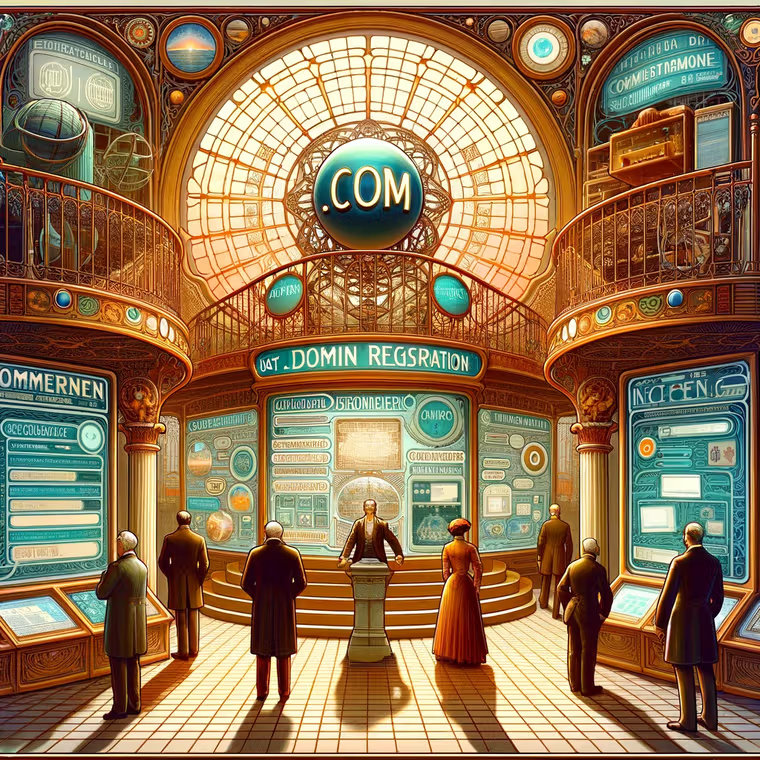
1985 marks the first dot com domain registered – the honor goes to Symbolics.com. For those interested, Symbolics was a computer manufacturer that ceased operations in 1996. The domain is still active (we checked!) and contains a list of the first 100 registered domain names (which we didn’t validate). Digital marketing and by extension, email marketing, started from these humble beginnings to grow into the industry we know and love.
1985 - Advent of Desktop Publishing

In parallel with the advent of the introduction of the laser printer by Apple in 1985, desktop publishing provided the ability to create visually appealing, well-designed marketing materials. Software like Adobe PageMaker made publishing more accessible than ever before, which had a direct impact on email marketing and the ability of marketers to connect with an audience electronically.
1985 - AOL Founded

America Online (AOL) is no doubt a part of the legend of the internet – giving rise to one of the first online services (known as PlayNET). Its iconic mail service would be launched in the 1990s, contributing to its popularity and place in our cultural lexicon.
The founding of AOL (originally known as Quantum Computer Services) introduced a user-friendly platform that played a role in popularizing the internet and email to the general public.
1986 - Electronic Communications Privacy Act (ECPA)

If you’ve ever wondered about the effectiveness of email marketing, you only need to look at the host of laws passed by governments around the world. The United States Congress passed the Electronic Communications Privacy Act (ECPA) in 1986 to extend government restrictions on wiretaps and electronic communications. The history of email marketing, as any modern email marketing will tell you, has been shaped by government regulation around privacy and data collection.
1987 - First Large-Scale Virus

What would the internet be if not for computer viruses? While not the first computer virus, the Christmas Tree EXEC virus was the first large-scale computer virus. It worked by drawing a Christmas tree and then forwarding itself to each entry in the user’s contacts file. It caused disruption and was a portend of future viruses, including the 1988 Morris Worm.
1988 - Microsoft Mail Introduced

It’s hard to believe, but the early days of email were largely confined to local area networks (LANs). Microsoft Mail was launched in 1988, representing the introduction of a major software vendor player in the growing commercial email industry.
1988 - The Morris Worm

On the heels of the Christmas EXEC virus, the Morris Worm plagued computer systems world-wide for over 2 years.
The worm’s creator, Robert Tappan Morris, was indicted under the Computer Fraud and Abuse act and has the dubious honor of being the first person indicted under this act (source). Mr Morris is quite accomplished, however, outside his infamous worm – having a successful career as a professor, entrepreneur, and associate of Y Combinator’s Paul Graham.
1989 - Lotus Notes Release

Lotus Notes was one of the first major software applications that combined email, document databases, and collaborative applications into a single platform. This is a portent of the software to come in the 1990s, 2000s, and 2010s. Lotus Notes signifies the increasing complexity and utility of email communications in day-to-day business.
1989 - The Invention of the World Wide Web

Tim Berners-Lee proposed the concept of the World Wide Web in 1989. This kickstarted a revolution of how information would be shared and serve as the bedrock of a multi-trillion dollar industry. It was developed while Berners-Lee was working at CERN as a way to share information between scientists around the world (source).
It goes without saying that the World Wide Web served as the foundation of modern digital marketing and, of course, email marketing.
1989 - Introduction of First Internet Service Providers (ISPs)

The internet existed originally as ARPANET (which we’ve seen referenced a few times in this history), but wasn’t publicly available until the late 1980s. The first internet Service Providers (ISPs) ushered in a brand new era of access.
While much of the technology for the internet was already being refined in laboratories, the next step in the evolution of the internet was about to take off in ways few could anticipate. The combination of this technology with commercial intent set off a rapid series of events leading to an information technology shift as significant as radio or television.
1990s Email Marketing History
While the 1970s and 1980s laid the groundwork for the future of email marketing, the 1990s were like the Cambrian explosion for email marketing. From the development of HTML, the popularization of ISPs, the launch of dozens of email clients, and even the first marketing automation platforms – the 1990s were a critical decade in the development of email marketing.
1991 - Introduction of HTML

Tim Berners-Lee influence on digital communications continued with the introduction of HTML in 1991. It’s important to note that this initial version was pre-version 1, and only included 18 tags (source).
While originally intended for academic purposes, HTML became the language used by browsers to display almost everything you see today. Think of HTML as the building blocks of content on the internet. Later, CSS would provide ways to colour and style those blocks, and JavaScript would give us the ability to create interactions and bring those blocks to life.
1991 - First Email from Space

“Hello Earth!” The crew of the Atlantis Shuttle sent the first email from space. Interestingly, they used Apple Macintosh Portable and sent it over the AppleLink network. While not the same ‘apple’ that fell on Newton, the event signifies the gravitational force of email marketing in the digital age.
1991 - Linux Kernel Released

The introduction of the Linux operating system in 1991 may not seem significant on the surface, but behind the scenes, Linux became the preferred operating system for servers. Email systems rely on server infrastructure, and Linux provides a solid, open-source platform for developers. Linux is known for its security features and, given the introduction of computer viruses in the 1980s, is a core benefit for email systems. While Linux indirectly influenced email marketing, its adoption throughout the 1990s and early 2000s played a role in the history of the internet.
1992 - Introduction of MIME

The technical developments of email like the development of Multipurpose Internet Mail Extensions (MIME) play a crucial role in the history of email marketing. MIME allowed for the insertion of images, audio, and even video. Proposed by Bell Communications in 1991, the specification moved to the Request For Comment (RFC) stage in 1992.
1992 - Introduction of Smartphones

IBM led the way by introducing the first smartphone in 1992, called IBM Simon. Although most of us wouldn’t be so impressed by this smartphone today, the Simon paved the way for the mobile revolution. Today, mobile email access is second-nature.
1993 - AOL Mail Launched

American Online (AOL) introduced its iconic email service, connecting it to the internet. AOL was one of the world’s largest email services in the 1990s, and anyone from that era will instantly connect with the “You’ve got mail” notification. The widespread usage of email provided new opportunities for email marketers.
1993 - Mosaic launched

Mosaic helped lead to an internet boom in the 1990s by providing the first graphical web browser. The point-and-click interface and ability to view graphics, listen to audio, or view video revolutionized the internet. It was made free to the public and thus played a pivotal role in digital and email marketing.
1994 - Netscape Navigator Release

Encouraged by the success of Mosaic, the Netscape Navigator browser was released in 1994. Netscape grew in popularity and helped to popularize the internet. Its rich set of technical features, including support for cookies and JavaScript, helped it become an iconic figure in the history of digital marketing.
1996 - Introduction of Hotmail

Hotmail was released in 1996, and along with AOL Mail and Yahoo Mail, were among the pioneers of webmail. Hotmail quickly became one of the most popular webmail services, and was acquired by Microsoft for a reported $400 million.
1996 - The Introduction of CSS (Cascading Style Sheets)

The first version of (Cascading Style Sheets) CSS was introduced in 1996. If HTML represented the building blocks of the internet, then CSS made it possible to style and design those blocks. With CSS, the internet began to transform to the visually appealing web pages we know and love today. This has a direct impact on email marketing, as support for inline CSS in emails helped to pave the way for beautiful emails.
1996 - MAPS and RBL Introduction

The Mail Abuse Prevention System (MAPS) is a non-profit organization founded in 1996. The organization started keeping a list of IP addresses that had sent out spam or engaged in otherwise abusive email practices. The MAPS team found themselves in court over the publication of its anti-spam blacklist in the early 2000s.
It maintained the Real-time Blackhole List (RBL) to allow mail servers to check the DNS of email senders to see if they were blacklisted for email spam. This list was controversial because the process of getting blacklisted was unclear, and could lead to blocking legitimate emails.
1997 - Microsoft Outlook Released

Microsoft launched the first version of Outlook in 1997 and quickly became a standard for email clients in business environments. Outlook provided formatting and design options that enabled email marketers to be more creative and reach a broader audience. It also integrated with calendar and scheduling functions to help streamline communication.
1997 - Launch of Yahoo! Mail

Yahoo! Mail was launched 1997 marking another significant step in the general accessibility of email. Along with its search engine, Yahoo! offered users a single platform to perform multiple online activities. This was beneficial for the user but also allowed for enhanced data collection for tailored marketing campaigns.
1997 - Microsoft Acquires Hotmail

Microsoft acquires Hotmail promising to provide consumers with “the best combination of free and premium email services.” This acquisition represents the growing importance of email as a digital marketing channel.
1998 - "You've Got Mail"

This iconic romantic comedy is centered around the burgeoning world of online communication, particularly email. The phrase "You've Got Mail" became synonymous with email notifications, especially for AOL users.
1998 - Spam Makes the Dictionary

The term “spam” was technically already in the dictionary – a well-known, if not well-liked meat product. In 1998, the email version of spam was officially added to the New Oxford Dictionary. The definition of email spam: "Irrelevant or inappropriate messages sent on the internet to a large number of newsgroups or users."
1998 - Data Protection Act (UK)

The Data Protection Act in UK law represents a significant step in how businesses could use personal data. If you want to understand the significance of email marketing, look no further than the acts and laws put in place by governments around the world. This act included provisions for data usage, consent for using personal data, and data protection standards.
1998 - CSS 2 Released

The release of CSS 2 by the World Wide Web Consortium (W3C) introduced many modern styling options such as positioning, media types, and aural properties. This release was the precursor to CSS 3, the current version of CSS used to style websites and emails.
1999 - Founding of Eloqua

Eloqua was a pioneer of marketing automation – one of the first platforms in the world. Eloqua played a pivotal role in shaping the future of marketing automation by bringing email marketing and lead management together in a single platform. Mark Organ, cofounder of Eloqua, was interviewed on Knak’s Podcast where he discusses his journey to launching Eloqua.
1999 - Permission-Based Email Marketing

Seth Godin’s book “Permission Marketing: Turning Strangers Into Friends And Friends Into Customers” emphasized the growing importance of building relationships in marketing. Obtaining consent prior to sending emails, while not necessarily a novel concept, spoke to the growing realization that batch-and-blast type emails were ineffective at best, and offensive at worst. As usual, Seth Godin proved himself a pioneer of digital marketing with this book.
1999 - CSS 3 Introduction Begins

The first drafts of CSS 3 were published in 1999. CSS 3 is the standard still used today. Unlike the previous version, it wasn’t a single specification rather a set of separate modules. It contains capabilities like animations, transitions, and grid layouts. The modern web owes its beautiful design to the advancements made in CSS.
1999 - Salesforce.com Founded

Salesforce.com was part of the cloud revolution, bringing an innovative CRM to businesses of all shapes and sizes. We take for granted cloud-based applications, but Salesforce was an innovator and ahead of its time. Salesforce has grown considerably, including acquiring numerous email marketing tools and marketing automation platforms.
2000s Email Marketing History
With the 1990s being the Cambrian Explosion of email marketing, the 2000s saw the diversification of tools, technology, and software. This period is marked by the launch of major vendors in the space as well as significant technological advancements to safeguard consumers. Events like the launch of Gmail, the iPhone, and numerous technologies like SPF, DKIM, and Bayesian filtering signify just how important this decade is to the history of email marketing.
2000 - Launch of ExactTarget

Now part of Salesforce, ExactTarget was a significant player in the email marketing space. ExactTarget is an early example of the excitement around the digital software space – successfully earning multiple rounds of investments from high profile venture capitalists until its acquisition by Salesforce in 2013.
2001 - Mailchimp launched

Mailchimp is one of the most well-known email marketing and marketing automation services in the world. Its founding in 2001 helped empower small businesses to utilize the power of email marketing. In particular, Mailchimp is known for its user-friendly interface and flexible pricing.
2001 - SpamAssassin

SpamAssassin was introduced by Justin Mason in 2001 when he uploaded it to SourceForge.net. The SpamAssassin score ranks various attributes of an email to help fight against email spam. It represented a major advancement in the fight against email spam using techniques like Bayesian filtering, reviewing DNS-based blacklists, and checking SPF and DKIM credentials.
2002 - Bayesian Filtering Techniques

The history of email marketing is intricately tied with the history of fighting spam. In 2002 Paul Graham published his paper titled, “A Plan for Spam.” It introduced an approach to filtering spam using Bayesian probability theory. To simplify his approach, Graham proposed a technique of analyzing the probability of certain words or phrases in spam and non-spam emails. The filter learns over time to identify spam and therefore reduce inbox clutter.
This had a long term impact on the fight against spam introducing a scalable, more sophisticated, adaptable system for identifying spam.
2003 - SPF (Sender Policy Framework) Introduced

The introduction of the Sender Policy Framework (SPF) in 2003 was another significant step in email security. SPF is an email authentication method used to prevent email spoofing – spoofing being the act of impersonating a legitimate domain to bypass filters and trick users. The SPF protocol gives domain owners the ability to specify which mail servers are authorized to send email on behalf of that domain through DNS records.
2003 - The CAN-SPAM Act is Enacted in the U.S.

In 2003, the Controlling the Assault of Non-Solicited Pornography And Marketing (CAN-SPAM) Act became law. US lawmakers were deliberate in naming this act – signaling their efforts to put “spam” back in the “can.” The CAN-SPAM Act was a response to growing concerns over spam, and included provisions for transparency, consent, opt-out mechanisms, and content regulations. Significantly, it also spelled out penalties for violations to act as a deterrent.
2004 - Microsoft's Caller ID for Email

The battle against spam continued as Microsoft, a giant in the email space with its Outlook and Hotmail platforms, introduced Caller ID. Caller ID would later be merged with Sender Policy Framework (SPF) to help in the development of SenderID. In short, Caller ID required email senders to publish a whitelist of the domains and then would have email clients verify the email came from the correct domain. This meant publishing and maintaining accurate DNS records, which meant adoption was somewhat limited.
2004 - SenderID Introduction

It’s common practice now for internal security training to teach employees to spot fraudulent domains. It’s tricky even now to always spot the subtle differences between legitimate and illegitimate domains.
However, prior to the introduction of SenderID, Caller ID, and SPF, it was possible for bad actors to “spoof” domains without any differences in the domain names. SenderID merged Caller ID with SPF to create a comprehensive approach to battling email spoofing and phishing attempts. It’s commonplace now for marketing operations professionals to set up, check, and maintain SPF records – and because of innovations like SenderID, your inbox is much cleaner.
2004 - DKIM (DomainKeys Identified Mail) Introduced

As part of a collaboration between Yahoo and Cisco, DKIM merged two similar email authentication efforts. Yahoo’s enhanced DomainKeys and Cisco’s Identified internet Mail were merged to create DKIM.
DKIM uses a digital signature to the email that is linked to the domain name of the sender. The signature is created using public cryptography and the sending name publishes the public key in its DNS records. Lastly, when an email is received, the mail server uses the public key of the digital signature to determine its validity.
2004 - Launch of Gmail

Google launched Gmail on April 1st, 2004 – and despite the timing on April Fool’s Day – it was loaded with smart features that helped it become one of the most popular email platforms in the world. From the beginning, it had innovative features like search, a large storage capacity and the ability to group conversations into threads.
2004 Onwards - Email Clients' Role

With innovations like DKIM and SPF, email service providers started to play a key role in reducing the number of spam emails. The gold rush of digital communication that email brought to the public was matched by an unparalleled level of spam and poor email practices. Protecting consumers from spam was a major theme of this period.
Major email service providers started using various methods to counter the increasing number of spam emails. ISPs used crude filters based on keywords, patterns, or special characters, and blacklists began to emerge to help blacklist frequent offenders. False positives were a significant issue with these early attempts at filtering unwanted emails.
2004 - Founding of Campaign Monitor

Campaign Monitor is an Australian tech success story and competitor to Mailchimp. Campaign Monitor put an emphasis on email design and ease of use instead of overall functionality, helping to make email marketing more accessible to businesses of all sizes.
2005 - Litmus Founded

Litmus was founded in 2005 to solve the problem of cross-browser testing of emails. It’s since grown into a tool to help marketers test campaigns across different clients, devices, and track analytics.
2005 - Introduction of Google Analytics

In November 2005, Google Analytics was launched. Google had purchased Urchin Software Corp in April 2005, and launched Google Analytics as its successor shortly thereafter. For a generation of digital and email marketers, Google Analytics is the default measurement tool for evaluating the effectiveness of digital campaigns, including email campaigns.
2006 - HubSpot Founded

HubSpot was founded in 2006 as an inbound marketing software platform but expanded to include marketing automation, CRM, and customer service features. Today HubSpot is one of the leading sales and marketing tools.
2006 - Founding of Marketo

Marketo was founded by Phil Fernandez, Jon Miller, and David Morandi. One of the seminal marketing automation platforms for enterprises, it has consistently provided innovative technology for marketers. Marketo is known as a pioneer in marketing automation, lead nurturing, and lead management.
2007 - Introduction of iPhone
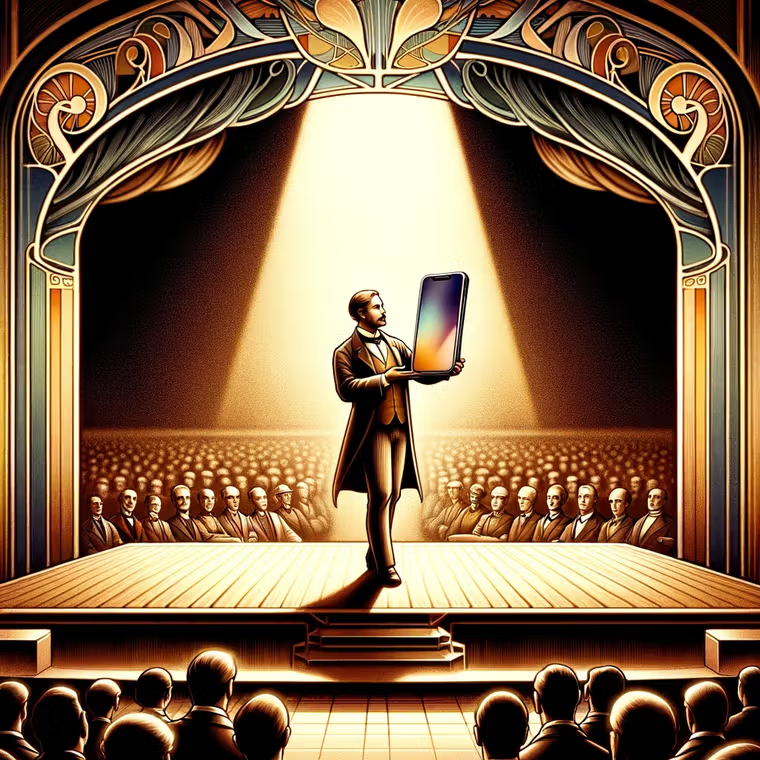
While the Apple iPhone wasn’t the first smartphone, its launch in 2007 marked the beginning of the mobile technology revolution. Over the next two decades, the widespread adoption of smartphones led to increased mobile email consumption and the ability to access email anywhere in the world.
2007 - Founding of Pardot

Pardot was founded in 2007 with a focus on B2B marketing automation. It was acquired by Salesforce in 2013 and integrated into the Salesforce platform.
2008 - Google Introduces Google Chrome

Google released the Google Chrome browser in 2008. Chrome was built with the V8 JavaScript engine which meant faster web applications because, unlike other engines at the time, V8 compiled scripts directly to machine code instead of producing intermediate code. This had an influence on all web browsers and helped shape the modern web.
2008 - Introduction of Android OS

Prior to Google’s introduction of the Android OS, the smartphones were either on the BlackBerry OS or Apple’s iOS. While popular, they had limitations in openness and hardware compatibility. The Android OS was an open-source operating system which allowed it to be used by various smartphone manufacturers. This helped democratize smartphone access, and grow mobile internet access around the world. Naturally, this influenced email marketing as the trend toward ubiquitous mobile access continued.
2010s Email Marketing History
The decade of the 2010s represents the beginning of the modern era of email marketing with seminal developments like the finalization of the email security triad (SPFC, DKIM, and DMARC), the advent of technologies like HTML5, and major pieces of legislation such as GDPR.
2010 - Launch of Responsive Web Design

The term “Responsive Web Design” was coined by Ethan Marcotte in 2010. The idea behind responsive design is that websites and emails should respond to a user’s environment based on screen size, platform, and orientation. Adoption proved tricky in email as many email clients have different levels of support for CSS and HTML standards. However, it’s now a standard practice in modern email design.
2012 - Oracle acquires Eloqua

Oracle acquired Eloqua, a marketing automation company, for $871 million. This acquisition was a key part of Oracle’s strategy to expand its cloud-based services with a view to “provide a highly personalized and unified experience across channels… and provide superior service at every touchpoint.”
2012 - Pardot acquired by Salesforce

Pardot was acquired in 2012 for $96 million by Salesforce. Over the next few years, Pardot was integrated into Salesforce Marketing Cloud, representing the growing importance of email automation in B2B marketing strategies.
2012 - CASL (Canada's Anti-Spam Legislation)
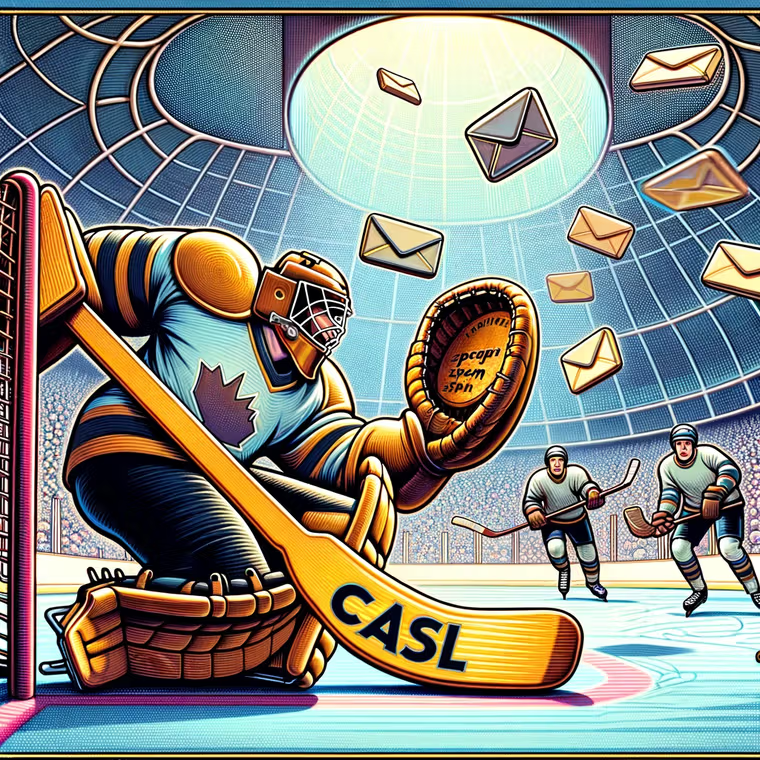
The enactment of Canada’s Anti-Spam Legislation (CASL) was another significant development in the fight against spam. The rising concern of spam not only represented email inbox clutter but also posed security risks with phishing and malware. CASL introduced tougher measures for both domestic and international email senders.
2012 - DMARC (Domain-based Message Authentication, Reporting, and Conformance) Introduced

DMARC (Domain-based Message Authentication, Reporting, and Conformance) was introduced in 2012 completing the triad of email security protocols alongside SPF and DKIM. DMARC was developed as part of a collaborative effort of tech companies like Google, Microsoft, and Yahoo.
The policy added a layer of reporting that allowed domain owners to specify how email receivers should handle messages that fail SPF or DKIM checks. It also provides a mechanism to send reports back to email senders about messages that fail DMARC evaluation.
2013 - Marketo Goes Public

Marketo had its initial public offering (IPO) on the NASDAQ, under the symbol MKTO, marking a significant milestone in the marketing automation industry. This moment recognizes the importance of marketing technology in the growth of digital marketing.
2013 - Acquisition of ExactTarget by Salesforce

In 2013, Salesforce acquired ExactTarget, a significant provider of digital marketing automation and analytics software, for approximately $2.5 billion. This acquisition expanded Salesforce's capabilities in the email marketing domain helping to complete its Salesforce Marketing Cloud offering.
2014 - HTML 5 Officially Finalized

HTML 5 was officially finalized by the W3C and WHATWG (Web Hypertext Application Technology Working Group). HTML 5 represented a major evolution in the markup language, introducing new features like semantic elements, multimedia support (video and audio elements), and new APIs for complex web applications.
2014 - Gmail’s Unsubscribe Button

Google quietly rolled out a significant update to its unsubscribe functionality by providing a more prominent unsubscribe button for marketing emails. This button’s positioning emphasized the importance of providing consumers with the ability to manage their inbox.
2014 - HubSpot Goes Public

In 2014 HubSpot went public under the ticker symbol “HUBS” validating the significance of marketing automation software in the rise of digital marketing. Long a proponent of inbound marketing strategy, HubSpot used its capital to continue to innovate and expand its offering to support sales, marketing, and support teams.
2015 - Founding of Knak

Knak was established, introducing a user-friendly platform for creating emails and landing pages without coding. This innovation made it easier for marketers to execute campaigns efficiently, impacting the email marketing landscape with its emphasis on accessibility and design simplicity.
2016 - General Data Protection Regulation (GDPR) Adoption

The adoption of the General Data Protection Regulation (GDPR) was a key moment in data privacy and digital marketing. It became enforceable on May 25, 2018 and included some of the toughest measures to date. For instance, any organization, regardless of location, had to comply with GDPR if they processed data of individuals residing in the EU.
2018 - Adobe Acquires Marketo

Adobe acquired Marketo for approximately $4.75 billion. This acquisition was a major event in the digital marketing world, integrating Marketo's robust marketing automation tools with Adobe's creative and digital experience software suite.
2018 - GDPR Enforcement Begins
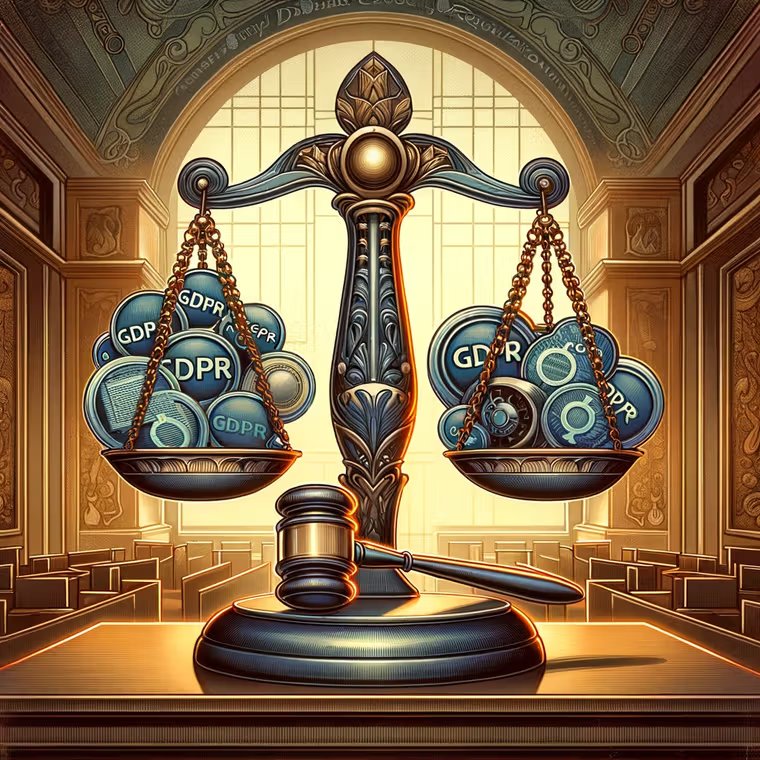
GDPR began being enforced on May 25, 2018. It had a global impact on email marketing, requiring marketers to ensure explicit consent for data collection and providing individuals with greater control over their personal data.
2020s Email Marketing History
As we enter the current era of email marketing history, it’d be fair to say that the history of email marketing is deeply intertwined with the history of spam. The 2010s saw major pieces of legislation come into effect, and the 2020s continues this trend. Privacy and data protection are critical topics that will undoubtedly influence the next decade of email marketing.
2020 - Impact of the COVID-19 Pandemic

Almost all at once, businesses around the world had to shift to the reality of COVID induced lockdowns and physical distancing measures. Digital platforms, such as ecommerce, saw unprecedented growth as consumers and businesses navigated the global pandemic.
2020 - California Consumer Privacy Act (CCPA) Enforcement Begins

The CCPA, a state-wide data privacy law, regulates how businesses all over the world are allowed to handle the personal information of California residents. It impacted email marketers by setting new privacy standards for data collection and usage. Along with GDPR, CASL, and other international privacy, CCPA represents the continued battle against spam and to safeguard consumer data.
2021 - Knak Recieves Series A Funding

Demonstrating the growing demand for campaign creation and no-code design tools for email marketers in enterprise organizations, Knak gets Series A funding from legendary VC firm, Insight Partners.
2021 - Apple's Mail Privacy Protection Announcement

In June 2021, during its Worldwide Developers Conference (WWDC), Apple announced Mail Privacy Protection for its Mail app. This feature limits the use of tracking pixels in emails impacting the ability of email marketers to measure open rates and analyze other metrics. This announcement is in line with broader trends toward more privacy-centric practices.
2023 - Link Tracking Protection in iOS 17 & macOS Sonoma

At the 2023 Worldwide Developers Conference (WWDC), Apple announced link tracking protections that brought a range of security and privacy updates. This includes reducing the number of tracking parameters that can be used in URLs across Apple’s various email and web platforms. Apple committed to stripping parameters from ‘known trackers’ such as marketing automation and email marketing software. Learn more in this article: Link Tracking Protection in iOS 17 & macOS Sonoma: Important changes for marketers
2023 - Google Spam Complaint Threshold
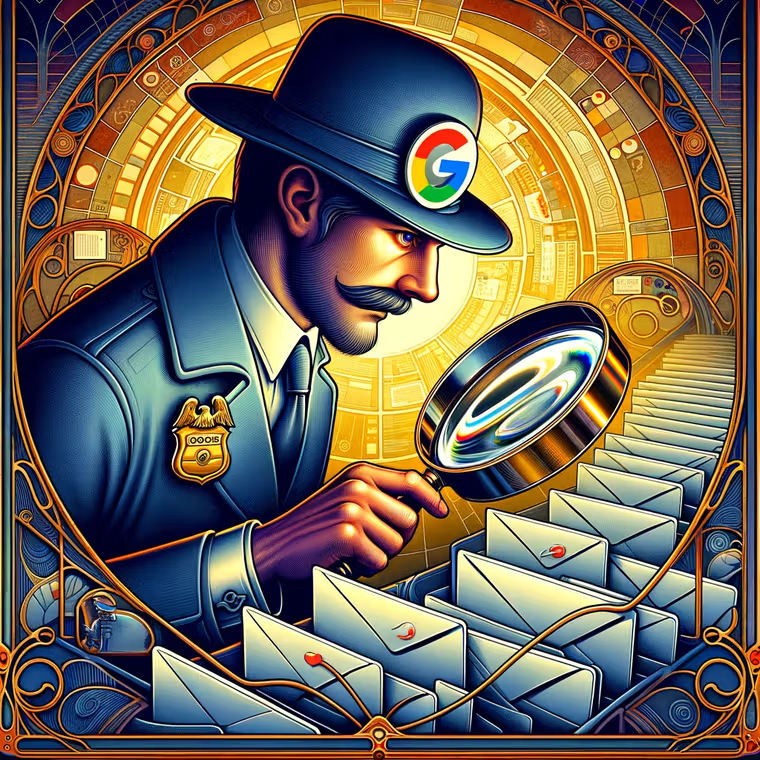
Google introduced strict new spam complaint thresholds that would come into effect in early 2024. This spam complaint threshold has stronger enforcement for violating brands, and will undoubtedly force many businesses to revise their email practices.
The Future of Email Marketing
It isn’t hyperbole to say that email communication is now a central part of the human condition. Certainly, our digital lives have been shaped by email communication. From its earliest days, email marketing's ability to influence our behavior has been clear, with Gary Thuerk’s first mass email as a great first example. The history of email, however, is intricately tied to the history of spam, privacy, and data security.
Governments and businesses around the world have taken proactive steps to protect consumers from unwarranted emails and to keep this form of communication accessible to everyone. Technical developments like SMTP ensured uniform message communication and the enactment of laws like GDPR and CCPA seek to protect consumers.
While the history of email marketing may at times seem to have a cloud of spam over it, email has also been a way to connect billions of people around the world. During the global pandemic, email stood strong as a way for us to stay connected when we sheltered-in-place. The significance of email in the development of our digital worlds cannot be understated: email communication is simply a part of who we are.
So what is the future of email marketing? I’d argue that the future is bright but the story is still unfolding – we’re not privy to what will come next, as innovations like AI will clearly influence the next decade of email marketing. But it’s safe to say that the marketers who will stake his or her claim in email marketing history will use this powerful communication channel wisely, respecting the consumer’s right to privacy and data protection.
Email History FAQ
What was the first email sent?
The first email was sent in 1971 by Ray Tomlinson, a computer engineer. It was a simple test message sent to himself, likely something along the lines of "QWERTYUIOP." This marked the beginning of email as a communication tool and set the stage for the development of email marketing.
What is the oldest email domain name?
The oldest email domain name is Symbolics.com, registered on March 15, 1985. Symbolics was a computer manufacturer, and while the company is no longer around, the domain is still active today, showcasing a piece of internet history.
When did email become mainstream?
Email started to become mainstream in the 1990s with the advent of user-friendly email services like AOL Mail, Hotmail, and Yahoo! Mail. These services made it easy for the average person to create an email account and communicate online, paving the way for widespread adoption.
Who invented email marketing?
Email marketing was essentially invented by Gary Thuerk in 1978 when he sent the first mass marketing email to 400 recipients via ARPANET. Thuerk's email promoted a new product from Digital Equipment Corporation, resulting in significant sales and earning him the title of "Father of Spam."
How has email marketing evolved?
Email marketing has evolved from simple text-based messages to sophisticated, multimedia-rich campaigns. Early emails were plain and unformatted, but today, they can include images, videos, interactive elements, and personalized content. Automation and segmentation have also become key components, allowing marketers to target specific audiences with tailored messages.
What is the oldest email marketing platform?
The oldest email marketing platform is arguably Mailchimp, launched in 2001. It revolutionized email marketing by providing an easy-to-use platform that allowed businesses of all sizes to create, send, and track email campaigns.
What were the original email providers?
The original email providers included services like MCI Mail, which was one of the first commercial email services introduced in 1983, and early internet service providers (ISPs) like AOL, Hotmail, and Yahoo! Mail, which launched in the mid-1990s.
Who sent the first spam email in 1978?
Gary Thuerk sent the first spam email in 1978. He sent a mass email to 400 users on ARPANET, promoting Digital Equipment Corporation's new product. This email is considered the first instance of spam, though it also led to significant sales, showing the potential power of email marketing.
How has email marketing changed over the years?
Email marketing has changed significantly over the years. It started with basic text emails and evolved into highly personalized and interactive campaigns. The introduction of HTML emails in the 1990s allowed for richer content, and the development of automation tools in the 2000s enabled more efficient and targeted campaigns. Today, email marketing is heavily influenced by data privacy laws and advanced technologies like AI, which help marketers deliver more relevant content to their audiences.
What are some key milestones in the history of email marketing?
- 1971: First email sent by Ray Tomlinson.
- 1978: Gary Thuerk sends the first mass marketing email.
- 1991: Introduction of HTML, allowing for richer email content.
- 1996: Launch of Hotmail, one of the first web-based email services.
- 2003: Enactment of the CAN-SPAM Act to regulate commercial emails.
- 2012: Introduction of DMARC to enhance email security.
- 2018: GDPR enforcement begins, setting new standards for data privacy.
- 2020: COVID-19 pandemic underscores the importance of digital communication, including email marketing.






